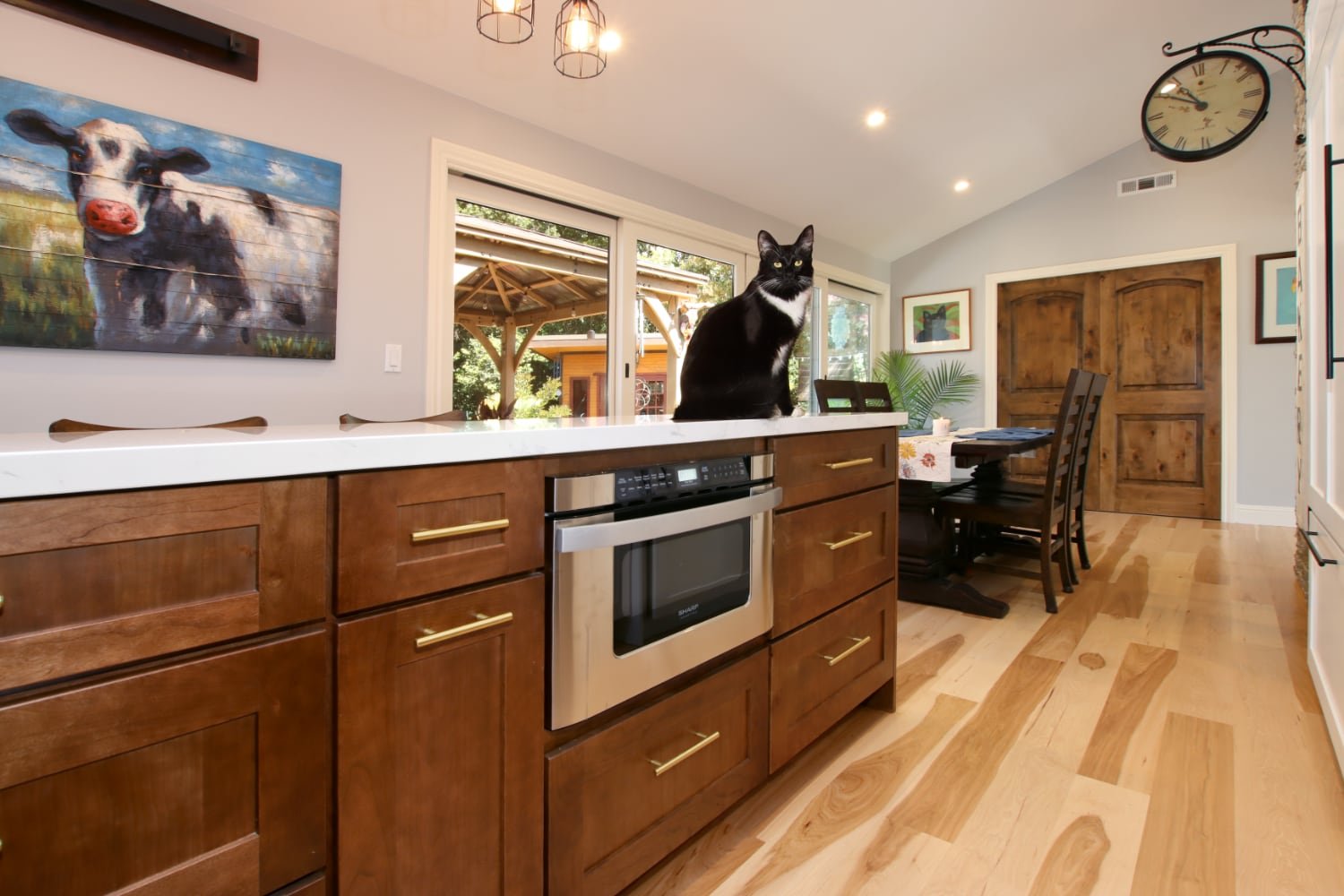Aging in Place Kitchen Renovations: Safety, Comfort, and Modern Trends
As the population ages, more homeowners are choosing to remain in their homes for as long as possible. Aging in place—living safely and comfortably in one’s own home as you grow older—has become a growing trend in the home remodeling industry. Among the most essential spaces to adapt is the kitchen, a hub of daily activity where functionality, safety, and accessibility are paramount. Here are some tips and product trends to consider when designing an aging-in-place kitchen.
Key Features of an Aging-in-Place Kitchen
Accessible Layouts
Ensure that there’s enough clearance between counters (at least 42 inches) to accommodate mobility aids like wheelchairs or walkers.
Opt for U-shaped or L-shaped kitchen designs, which provide ample workspace and storage while keeping everything within reach.
Easy-to-Reach Storage
Install pull-down shelves or adjustable-height shelving in upper cabinets.
Use pull-out drawers and lazy Susans in lower cabinets to minimize bending and reaching.
Incorporate shallow pantry shelves for better visibility and access.
Non-Slip Surfaces
Choose non-slip flooring materials like textured tile, vinyl, or rubber to reduce the risk of falls.
Install anti-slip mats near sinks and cooktops for added safety.
Lighting Improvements
Layer lighting with under-cabinet lights, recessed ceiling lights, and pendant lights to eliminate shadows and improve visibility.
Use dimmer switches to adjust lighting levels as needed.
Ergonomic Features
Select appliances with easy-to-read controls and front-mounted knobs or digital touchpads.
Opt for a wall oven with a side-swing door for safer access.
Consider a French-door refrigerator, which reduces the need to bend.
Popular Product Trends for Aging in Place
Hands-Free Faucets
Motion-sensor or touch-activated faucets reduce strain and are more hygienic.
Look for models with temperature presets to avoid accidental burns.
Induction Cooktops
Induction cooktops remain cool to the touch, reducing the risk of burns.
Many models include safety features like automatic shut-off when cookware is removed.
Drawer Dishwashers
Drawer-style dishwashers are easier to load and unload compared to traditional models.
Install them at waist height for maximum convenience.
Adjustable Countertops
Motorized countertops can be raised or lowered to accommodate standing or seated users.
Pair these with pull-out cutting boards for additional flexible workspace.
Smart Home Integration
Voice-controlled devices can adjust lighting, start appliances, or provide reminders for timers.
Smart refrigerators can help with inventory tracking and meal planning.
Design Tips for Aging in Place
Prioritize Safety: Install grab bars near sinks and cooktops for extra stability. Rounded countertop edges can prevent injuries in case of falls.
Think Ahead: Choose cabinets and drawers with soft-close mechanisms to avoid pinched fingers and reduce noise.
Future-Proof Your Space: Even if mobility is not currently a concern, adding features like wider doorways, lower counters, and lever-style handles ensures the kitchen will be functional for years to come.
Consult a Professional: Work with a contractor or designer who specializes in aging-in-place renovations to ensure the design meets current and future needs.
Aging in place kitchen renovations offer the opportunity to create a kitchen that is not only safe and accessible but also stylish and efficient. By incorporating these tips and trends, homeowners can enjoy their kitchens—and their homes—for many years to come.



